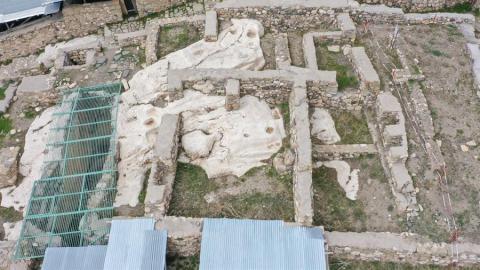Urartu-era open-air temple discovered in eastern Turkey

An open-air temple area that is 2,800 years old, dating back to the Urartu period, has been discovered in the historical Harput Castle in the eastern province of Elazığ.
The open-air temple area, which consists of an oval and flat area for sacrificial animals, seats, steps, niches and cavities of different shapes and sizes made for various purposes, is believed to have been used in religious ceremonies in the southwestern part of the Harput Castle.
The open-air temple area, discovered by Fırat University academic and Harput Castle excavations' head Professor İsmail Aytaç and his team, is aimed to open to visitors after a comprehensive examination process.
Speaking to the state-run Anadolu Agency, Aytaç said that they are trying to unearth the traces of civilizations with the archaeological studies and researches in the Harput Castle, which has traces of many civilizations since ancient ages.
Aytaç stated that the open-air temple area in the Harput Castle, located in the western border of the Urartu capital Van, is of great historical and cultural importance.
Stating that three sacred areas were found in the Harput Castle, and the most important of these was a sanctuary located on the southwest side of the castle, Aytaç said, "This sanctuary is reached from the west by climbing 30 steps towards the north. At the last point we climbed from the steps, there was a throne section and there were broken stone elevations and reliefs on its two sides. In addition, there were sitting areas in the north and south, which were also climbed by steps. At its highest point, the chaplain led the rites. It is probable that in the flat oval area just below the vertex, the sacrifice was being slaughtered, and the people were...
- Log in to post comments
